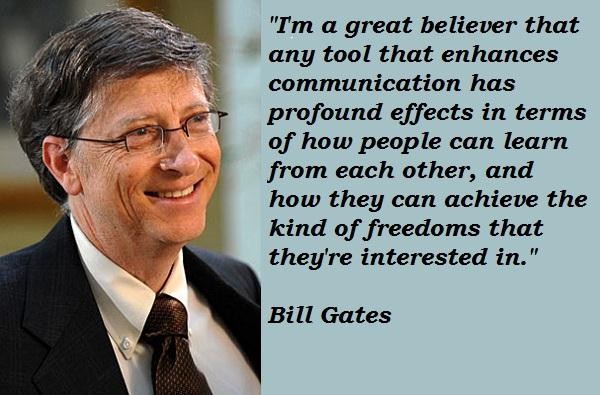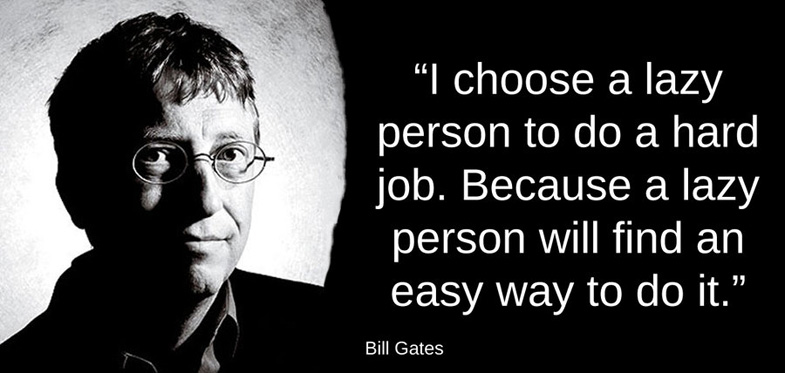Bill Gates: Microsoft Cofounder
William Henry “Bill” Gates III, the man who is known for his “Microsoft” and richness founded the world’s largest software business, Microsoft, with Paul Allen. He is an American business magnate, philanthropist, investor, computer programmer, and inventor. Through technological innovation, keen business strategy and aggressive business tactics, he and partner Paul Allen built the world’s largest software business, Microsoft and subsequently he became one of the richest men in the world. He is consistently ranked in the Forbes list of the world’s wealthiest people. He is one of the richest men in the world and a major philanthropist through the Bill & Melinda Gates Foundation.
BORN: 28 October 1955 (age 59), Seattle, Washington, US
PARENTS: William H. Gates Sr., Mary Maxwell Gates
SPOUSE: Melinda Gates
CHILDREN: Jennifer, Rory, and Phoebe
EDUCATION: Harvard College, Lakeside School
OCCUPATION: Technology Advisor of Microsoft Foundation
Co-Chair of the Bill & Melinda Gates
CEO of Cascade Investment
Chairman of Corbis
RESIDENCE: Medina, Washington, US
SIBLINGS: Kristianne, Libby
EARLY LIFE
He was born in an upper-middle-class family with a rich history of business, politics, and community service. Gates’ great-grandfather was the state legislator and mayor, and his grandfather was the vice-president for the national bank. William H. Gates, Bill Gates’ father, was the prominent, Seattle defensive lawyer. Mary Maxwell Gates, Bill Gates’ mother, was the school teacher and the chairperson for the United Way Charity. The Gates family atmosphere was warm and close.
EDUCATION
At the age of 13, his parents enrolled him at Lakeside School, Seattle which was known for its exclusive academic environment. Also this school first introduced Gates to the computers. Gates began to show an interest in computer programming at that age. He was excelling in math and science, but also doing very well in drama and English.
When he was in the eighth grade, the Mother’s Club used proceeds from the school’s rummage sale to purchase a Teletype Model 33 ASR terminal and a block of computer time on a General Electric (GE) computer for the school’s students. Bill Gates took an interest in GE programming and spent much of his free time working on the terminal. He wrote his first program, tic-tac-toe that allowed users to play against the computer.
At Lakeside School Bill met Paul Allen, who was two years his senior. They two became fast friends, bonding on their common enthusiasm over computers. They both spent much of their free time together working on programs. Once they were banned by Computer Center Corporation (CCC) for the summer after it caught them exploiting bugs in the operating system to obtain free computer time. At the end of the ban, they were offered to find bugs in CCC’s software in exchange for computer time. During this time, Gates developed a payroll program for the computer company the boys hacked into, and a scheduling program for the school.
In 1970, Bill Gates went into business with Paul Allen. At age of 17, Gates formed a venture with Allen, called Traf-O-Data, to make traffic counters based on the Intel 8008 processor. In early 1973, Bill Gates served as a congressional page in the U.S. House of Representatives.
Bill Gates graduated from Lakeside in the same year. Gates then was accepted to Harvard University. While at Harvard, he met Steve Ballmer, who would later succeed Gates as CEO of Microsoft. Gates did not have a definite study plan while a student at Harvard and spent a lot of time using the school’s computers. Gates remained in contact with Paul Allen, and joined him at Honeywell during the summer of 1974. Gates and Allen saw this as the opportunity to start their own computer software company after the release of the MITS Altair 8800 based on the Intel 8080 CPU.
CAREER
In 1975 Gates contacted Micro Instrumentation and Telemetry Systems (MITS), the creators of the new microcomputer and demonstrated an Altair emulator that ran on a minicomputer, and then the BASIC interpreter. The demonstration, held at MITS’s offices in Albuquerque, was a success. Paul Allen was hired into MITS and Gates took a leave of absence from Harvard(never returned to Harvard to complete his studies)to work with Allen at MITS in Albuquerque in November 1975. They named their partnership “Micro-Soft” and had their first office located in Albuquerque. On November 26, 1976, the trade name “Microsoft” was registered with the Office of the Secretary of the State of New Mexico. Microsoft separated from MITS in late 1976, and continued to develop programming language software for various systems. On January 1, 1979 the company moved from Albuquerque to Bellevue, Washington.
IBM approached Microsoft in July 1980 regarding its upcoming personal computer, the IBM PC. Gates proposed using 86-DOS (QDOS), an operating system for the PC and delivered it to IBM as PC DOS in exchange for a one-time fee of $50,000 but refused to transfer the copyright on the operating system. The restructuring of the company on June 25, 1981, made Gates President of Microsoft and the Chairman of the Board. November 20, 1985, Microsoft launched its first retail version of Microsoft Windows. From Microsoft’s founding in 1975 until 2006, Gates’s role at Microsoft for most of its history was primarily a management and executive role. He aggressively broadened the company’s range of products, and wherever Microsoft achieved a dominant position he vigorously defended it. He gained a reputation for being distant to others. He had become a competitor for others. According to the Bloomberg Billionaires Index, Gates was the world’s highest-earning billionaire in 2013. On February 4, 2014, Gates stepped down as Chairman of Microsoft to become Technology Advisor alongside Satya Nadella.
ANTITRUST LITIGATION
Soon Gates was accused for practicing unfair marketing practices, and a case with the Department Of Justice Division Anti Trust Department was opened. Microsoft was receiving the royalty fees even for a non-Microsoft Operating System which most manufactures thought was most unfair. Microsoft agreed to stop charging the fees and the Department Of Justice dropped the case.
GATES AS PHILANTHROPIST
Bill Gates’s after his mother’s death created philanthropic organizations that fought certain causes, and was the interests his mother had. In 1994 he sold some of his Microsoft stock to create the “William H. Gates Foundation.” In 2000, Gates and his created the charitable “Bill & Melinda Gates Foundation,” which was identified as the world’s wealthiest charitable foundation by the Funds for NGOs company in 2013. The Foundation allows benefactors to access information that shows how its money is being spent, unlike other major charitable organizations such as the Wellcome Trust. As of 2007, Bill and Melinda Gates were the second-most generous philanthropists in America, having given over US$28 billion to charity.
On August 15, 2014, Bill Gates posted a video of himself dumping a bucket of ice water on his head, after Facebook founder Mark Zuckerberg challenged him to do so, in order to raise awareness for ALS.
BOOKS
- The Road Ahead, November 1995.
- Business @ the Speed of Thought, 1999.
DOCUMENTARIES
- Triumph of the Nerds (1996)
- Nerds 2.0.1 (1998)
- Waiting for “Superman” (2010) [129]
- The Virtual Revolution (2010)
FEATURE FILM
- Pirates of Silicon Valley, 1999. Gates is portrayed by Anthony Michael Hall.
- The Social Network, 2010. Gates is portrayed by Steve Sires.





